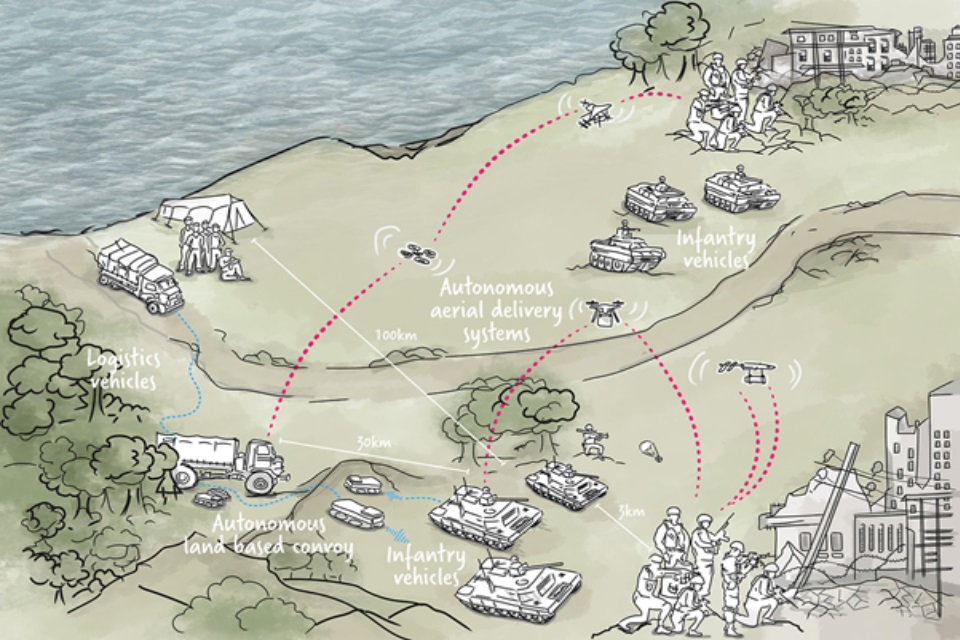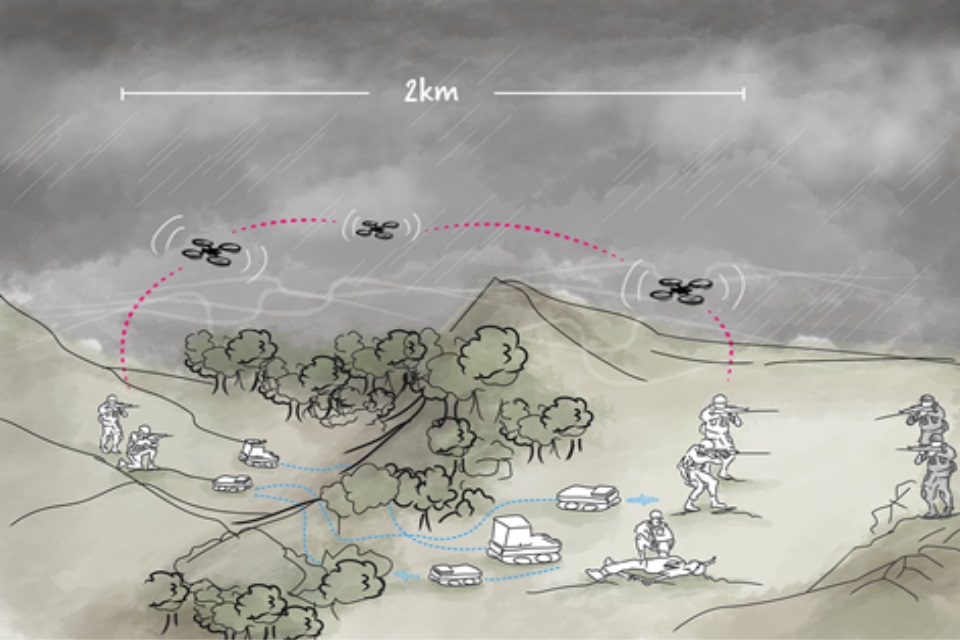Annex A: example resupply scenarios vignettes
Updated 29 June 2017
1. Vignette 1: Resupply at reach

In this scenario, a mechanised infantry brigade is deployed at least 100km from the nearest base and is spread over a wide area. Logistics vehicles follow behind to keep the force sustained, but these move slowly off road and cannot rapidly resupply within the ‘last tactical mile’ where combat forces are deployed.
The distances from the logistics vehicles and the infantry vehicles are approximately 30km. In this vignette, one infantry vehicle from a squadron has broken down, and the vehicle mechanics require a small spare part they do not have with them, and a top-up of fuel to repair their vehicle and proceed to their objective. The part (and fuel if possible) is to be moved forward by autonomous vehicle(s) over off-road terrain from a logistics vehicle 30km to the rear.
Meanwhile, soldiers have dismounted from their vehicles and have just secured their objective at a town in complex terrain. The soldiers are not in contact but remain in a high-threat environment.
They now require sustainment and are 3km ahead of the infantry vehicles they left in order to fight on to the objective. Each requires a replenishment of ammunition, water, food and sleeping systems. Approximately 50kg of supplies are required from each vehicle to be moved forward to each vehicle’s section within 30 minutes and the road into the urban area is blocked to large vehicles with rubble and IEDs. Autonomous vehicles are to be launched either from the infantry vehicles or from the logistics vehicles further to the rear in order to resupply the infantry holding the urban terrain.
2. Vignette 2: emergency battle replenishment

In this scenario, a light infantry platoon has come into contact with the enemy. The platoon in contact has taken a casualty, is unable to win the fire fight and is running low on ammunition which is reducing their combat strength. The reserve platoon due to reinforce are located less than 2km away but due to the terrain their mobility is limited and they will take at least 20 minutes to arrive. Immediate ammunition replenishment is required in order to break contact and extract the casualty.
Autonomous vehicles must deliver ammunition to the platoon in contact within 6 minutes. The vehicles must be capable of rapidly planning and navigating a route over difficult off-road terrain, and in high winds, heavy rain and poor visibility or at night.
The quantity of loads required is small; less than 5kg per man and around 50kg in total will allow the platoon in contact to increase their rates of fire to defeat the enemy or safely withdraw.
Tempo, accuracy and ease of operation are paramount in this operation. Loads should be delivered as far forward as is feasible – the right nature of ammunition should arrive for each fire team or even directly to the feet of each soldier.
Once the whole company is out of contact, it will be rapidly resupplied within 30 minutes in line with the development of future concepts for Light Forces. Autonomous systems are to be used to deliver as much as is feasible as the terrain and threat environment could lead to further casualties.
